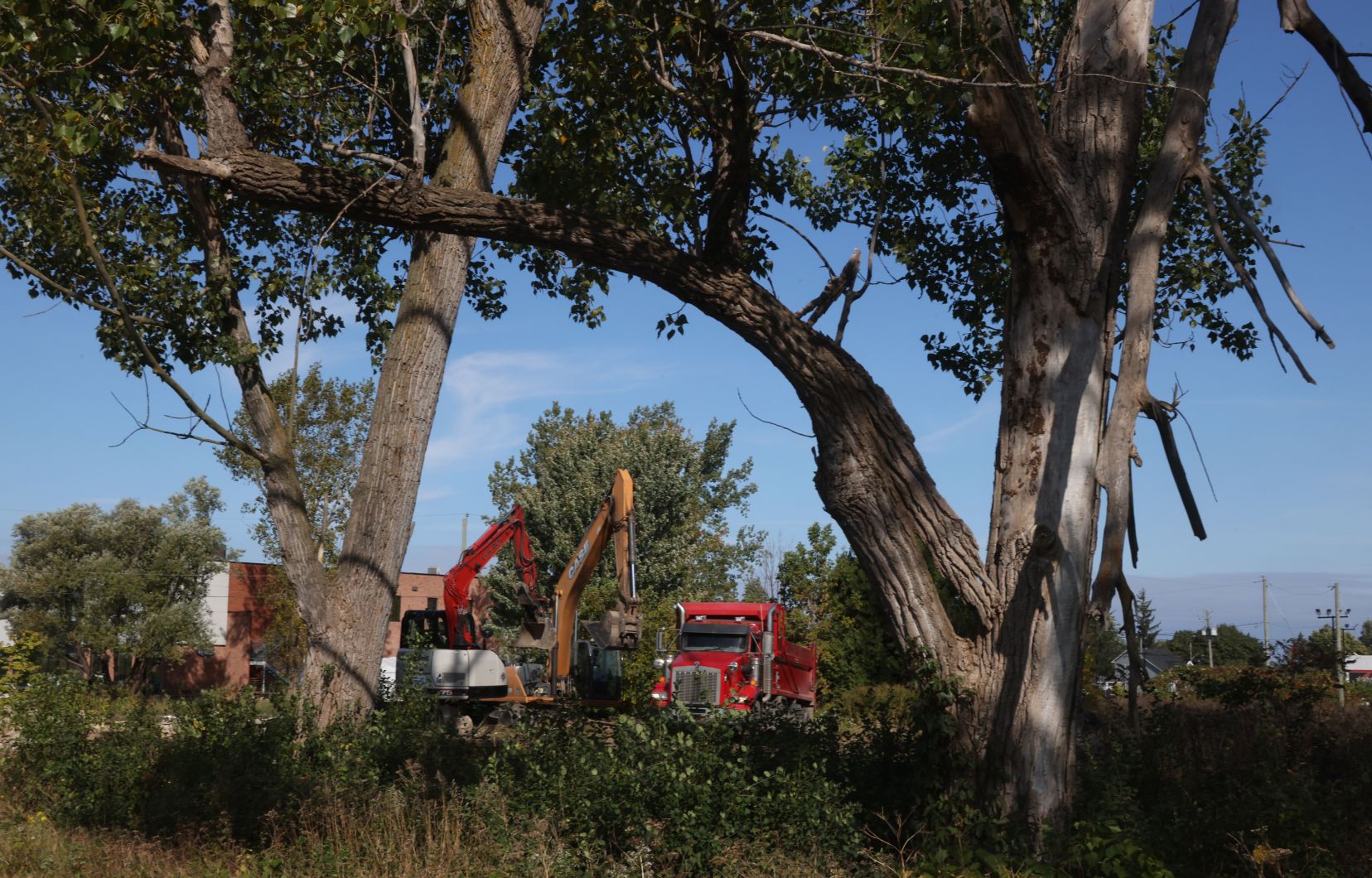The possible conversion of one of the last vestiges of Châteauguay’s agricultural past in a residential area raises the ire of citizens. The “terre à Faubert” and its 28 hectares of nature which border the highway 30 could disappear in a few years, the housing project having reached a new stage this week.
The building permits have not yet been issued, but already, the mechanical shovels were busy Tuesday morning picking up what remained of the agricultural buildings dating from 1890 on the land in Faubert, whose name refers to the family that cultivated the area. Since its agricultural rezoning in 2022, a whole citizen mobilization has been organized to slow the loss of this green space. Chantale Payant, who leads the movement, is depressed by the construction site which is progressing despite everything. “Where is the emergency?” she asks.
“It’s 28 hectares of sponge. The soil is considered class 2 [l’un des meilleurs qu’on peut avoir au Québec pour l’agriculture]”It’s a filter against highway pollution,” lists M.me Paid.
The plan, as suggested by the City of Châteauguay, could include more than 2,000 housing units. According to its planning documents, a minimum height of “2 to 3 storeys” is planned, while the maximum height would be 12 storeys. At least 35% of the land would be reserved for natural spaces, and the rest would be mineralized. Underground parking would also be favored by the municipality.
Project details unveiled by the City have caused a real outcry. A petition with over 7,500 names is circulating online to stop the destruction of this natural environment. In addition to preserving the environment, the prospect of heavy traffic congestion in the nearby single-family home neighborhood and the risk of flooding in the event of heavy rains worry Chantale Payant. “We would like to see urban agriculture there. There are still fruit trees. There are still trails. It’s the big park in the area. For us, it’s exactly the example of urban sprawl that we don’t need.”
Despite the protests, the conversion of the plot of land accelerated in the summer. In June, the city presented a preliminary version of a special urban plan intended to frame its development. The document was subsequently refined and adopted on Monday by the city council. A new consultation is to follow on October 24.
For us, this is exactly the example of urban sprawl that we don’t need.
The City supports the project
The developer did not want to say more about the form that the new Châteauguay district could take.
“It is better to wait calmly to see what comes out of the process” before expressing oneself, indicated by telephone the president of AI développement immobilier, Louis Conrad Migneault, one of the members of the group at the origin of the project. Illustrations showing the broad outlines of their plans will be made public next January, he let fall however.
In an interview, Châteauguay Mayor Éric Allard showed his full support for this future housing construction. According to him, the new neighbourhood will become a “signature project” for Châteauguay and will form a “balance between the need for housing and environmental protection.”
A wetland will be created at the edge of the neighborhood, and citizens’ ideas will be taken into account.
As for the buildings demolished this week, they were not heritage buildings in any way, he maintains. “They were mainly a symbol of squatters, of people who cause trouble, of police interventions, of fire risks.”
Although the term “heritage” was not officially applied, the media Pivot recently revealed that the Ministry of Culture considered these buildings as an “element of interest” to “symbolize the importance of the agricultural identity of the city.”
A letter from the ministry to the municipality indicated that “the main building has a good state of authenticity and appears to be in good general condition despite the various modifications made and the damage suffered. No issue for public safety has been demonstrated.”
With the exception of the land in Faubert, there are only two other vacant lots left in Châteauguay, according to the specific urban planning plan.
This story is supported by the Local Journalism Initiative, funded by the Government of Canada.
